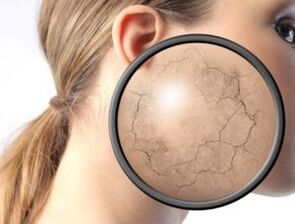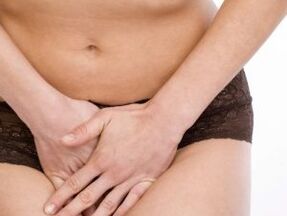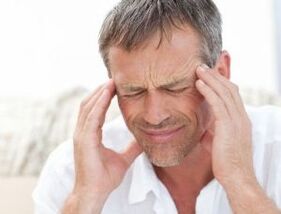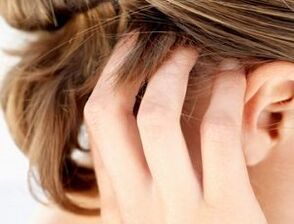
Timely detected disease is the key to successful treatment. This rule is especially true for diseases that are very difficult to treat. These include lichen scaly, better known as psoriasis. In recent decades, this disease has covered more and more areas, affecting infants and retirees, tilting the statistics in a sad direction.
It wasn't in vain that the scaly lichen aroused so much interest. Today, psoriasis has shifted from the classification of common skin diseases to systemic pathologies. Patients with this disease have been found to be more prone to infections, heart disease, depression, and diabetes. Given the lack of a uniform treatment system, it is very important to identify psoriasis at an early stage.
First Signs of Psoriasis
The symptoms of this dermatosis are recognizable even to those who have never faced a similar problem. A common sign of lichen scaly is a variegated rash.
This rash appears on inflamed areas of the epidermis, can be large or engraved, with scaly and sometimes purulent filling. Each element of such a rash is called a papule. Observations from patients with psoriasis have shown that this disease can show the first signs even before the papules appear on the body.
In most cases, the onset of the rash is preceded by mood swings, loss of appetite, and indigestion. It has been noticed that a depressive condition, often for no reason, very often appears a few days before the first papules form. The problem is that patients with similar symptoms do not see a reason to see a doctor. But even if you visit a doctor in time, the practitioner is far from always able to determine the true cause of such a condition and make a correct diagnosis.
Rash on the body is the main symptom of psoriasis. Depending on the type of scaly lichen (and there are dozens of them), the location of the lesion, and the age of the patient, the disease can manifest itself in different ways.
Manifestations of children

Scaly lichens can occur even in infants. This is very rare, but often aggravated by the parents themselves. The first signs of the disease may resemble stinging heat or allergies, so adults rely on their own knowledge and treat the child alone. In most cases, babies with psoriasis see a doctor as the disease progresses.
In infants, the scaly lichen most often appears in folds: inside the thigh, underarms, between the toes and hands, in the folds of the skin on the neck. The appearance of papules is often accompanied by itching, so the baby can be very restless, not sleeping at night, and refusing to eat.
Lesions are reminiscent of thrush, diaper rash, or eczema. Inflamed skin turns red or pink and feels hot to the touch. Pustules appear exactly or can form whole spots - plaques. Such spots usually rise above healthy skin. The distinguishing feature of psoriasis plaques is the presence of dry crust and scales on the rash, but in an infant, papules and plaques are often located at the site of heavy sweating, which moisturizes the surface of the inflammation.
When these symptoms appear, it’s important not to waste time on folk remedies and tips for the older generation. If a newborn has a rash (of any kind), he or she should urgently present it to a pediatrician and dermatologist. The treatment of psoriasis in infants is not much different from the therapy in adults, the infant is attributed therapeutic non-hormonal ointments, in severe cases tablets and injections.
In older children, the initial symptoms of scaly lichen are no different from those in adults. However, children can suffer from any type of psoriasis:
- Plaque- most common. Signs are dry, red, hot spots. The papules are covered with hard bark and have faint scales on the surface. They can appear anywhere, dotted, or compacted into tablets. Itches most often, but not necessarily.
- Pustular- characterized by the presence of liquid or pus inside the papules. The initial stage is the same as its plaque: the papules with clear edges rise above the epidermis but are filled with fluid.
- The hairy part of the head- may appear dandruff, but over time it forms a strongly flaky crust on all or part of the head. The hair in the affected area becomes thinner and thinner. This type of psoriasis often appears in the folds behind the ear.
- Palmar-plantar- almost never occurs in children. The localization on the palms and soles is different, while coarse-skinned and scaly "lakes" appear.
- Bending surfaces- most often formed on the elbows, knees, genitals. In the absence of psoriasis, it differs from other types of psoriasis. The affected skin is covered with a smooth and firm crust reminiscent of a single spot raised above the surface of a healthy epidermis. Color - pale pink, gray-white, pink.

If you experience any skin peeling or inflammation, consult a dermatologist. Psoriasis in children progresses very quickly, especially if it is accompanied by itching.
Damaged papules become easily infected, grow, and cover an ever-increasing area. After the prescribed treatment regimen, it is important to constantly monitor the child, prevent scratches from wounds and new injuries to the body, and adhere to a diet.
Manifestations of Women
The first stage of psoriasis can occur at any age, but most often the first epidemics occur before the age of 20, although the disease can "sleep through" for up to 50 years. Adult men and women experience the same symptoms as adolescents. At a more mature age, the risk of developing psoriasis on the soles of the feet, nails, and joints increases.
World statistics on diseases show that women suffer from scaly lichen almost one and a half times more often, while the main proportion struggles with plaque psoriasis. It is not known exactly what caused this selectivity, but scientists suggest a hormonal factor among the causes of psoriasis.
Because of the same hormones, the signs of scaly lichen most often occur in girls during PMS when the hormonal background changes. In addition, a woman’s natural sensitivity makes stress, depression, and neuroses more vulnerable. For people prone to psoriasis, any psychic instability can trigger an outbreak of the disease.
Other causes of disease exacerbation include:
- skin damage (burns, cuts, open wounds);
- allergic reactions;
- infectious diseases;
- metabolic disorder;
- Bad habits and unhealthy diet.
In fact, if a woman is genetically predisposed to psoriasis, one of the irritating factors will sooner or later cause an outbreak. To avoid further such exacerbations, the patient should carefully monitor their lifestyle.

The symptoms of psoriasis in women are the same as in men, the only gender difference appearing when the external genitals are involved. In the genital area, girls face a plaque-like and inverted appearance, sometimes pustular. The first symptoms are inflammation of the labia or labia, rarely involving the mucous membranes.
Small needle-headed papules may appear multiple or as a single patch. Scales of genital psoriasis rarely appear because the location of the localization does not allow air to enter. The distinguishing feature of psoriasis rash is that the papules and plaques protrude slightly above the surface and are hot. If you have any of these symptoms, you should contact a dermatologist and a gynecologist immediately.
Manifestations of men
Half a man, as noted, suffers from scaly lichen slightly less often than women. However, the course of the disease and the symptoms remain unchanged for both parties. Survey and analysis of patients showed that the first symptoms occur in men between the ages of 22 and 25, while in women it occurs from the age of 15 years. Such "late" symptoms are accompanied by the fact that in the stronger half the hormonal balance is established later.
Psoriasis starts the same way in men. In most cases, small silvery scales appear first and then merge into large patches — plaques and “paraffin lakes”.
Guttate psoriasis affects large areas of the body at the same time, but with separate small joints.
Psoriasis can be distinguished from other skin conditions at home if you look closely at the inflamed elements:
- A dense, coarse crust forms on the surface of the papules and plaques, which peels off. The white scales on the surface peel off easily when scraped, resembling chips.
- When you completely remove the scale from the papule, a thin transparent film remains on it.
- When the film is removed from the psoriasis, large droplets of blood appear at this point because there are many capillaries in the papules.

In addition to the obvious symptoms, scaly lichen is sometimes accompanied by a general weakening of the body, a state of depression, and an increase in body temperature. The elements of psoriasis can vary in shape, for example, small papules with a small number of individuals appear with a point change. Infection of a large area of the body (whole back, side, abdomen, legs) occurs with teardrop-shaped psoriasis, while papules are drop-shaped. Large, localized spots are signs of coin psoriasis on the coin.
Based on observations from patients of both sexes, the researchers concluded that scaly lichens are more severe in men and the frequency of exacerbations is higher than in women. Expert opinions noted that this was due to the banal willingness to be treated. The weaker party, however, is more attentive to their health and visits the doctor much more often for prophylaxis than the stronger sex. The only type of psoriasis in which men do not hesitate with treatment is the genitals. Plaque-like, posterior or pustular plaques may appear on the vaginal penis, scrotum, or pubic area.
Due to the sensitivity of the skin in these areas, the inflammation progresses very quickly and requires immediate treatment. When detecting a possible genital rash, it is not worth spending time on "self-examination" and self-healing. Even without abundant peeling of the skin, red inflammation and itching, it is a reason to see a doctor.
Psoriasis of the nails (onychodystrophy) and scalp is also common in men. These two types, according to dermatologists, are most often initiated by men. Despite the fact that there are a lot of photos on the internet with signs of the disease, the symptoms of scaly lichen are perceived as fungus or dandruff and are already in progressive form to see a doctor.
In case of scalp damage, severe peeling, sometimes itching, rough crust appear in places or on the entire surface of the scalp. Psoriasis of the nails manifests a change in the color of the nail, the appearance of depressions and bumps, and the compaction of the nail plate and the skin around it. The gradation of symptoms is examined in more detail below.
So the symptoms of psoriasis in children, women and men are no different. Any inflammation on the skin of the body, head or nails will cause a doctor to be consulted. If the affected areas do not itch or flake, this does not mean that the brt is not affected by the psoriasmr.
Symptoms of psoriasis
The first signs of the disease usually last for several days, after which they begin to progress rapidly. Sometimes the disease can develop very slowly and the initial symptoms are "delayed" for a week or more. In any case, the disease will sooner or later enter a full-fledged phase. Psoriasis localization sites often mislead patients and professionals themselves. Psoriasis of the nails during the first manifestations is very difficult to distinguish from the common fungal infection.
Appearances on the scalp

In the early stages of development, psoriasis on the scalp appears to be a mild exfoliation. The affected areas gradually take on a reddish tinge, hurt and itch, sometimes extending beyond the hair: at the back of the head, behind the ear, on the forehead. The epidermis of inflamed areas becomes denser, and the dense structure of psoriasis rash is considered one of the distinguishing features.
This manifestation is often confused with seborrhea, in which the scalp is also strongly flaky. However, unlike seborrhea, the elements of psoriasis bleed when the upper scaly layer is removed from them. In addition, psoriasis is characterized by roughening of the affected skin. If this rash is accompanied by severe itching, patients often exacerbate the situation by traumatizing plaques and papules. Open wounds become infected quickly and the disease progresses.
This scaly lichen occurs in children and adults. Self-treatment attempts often only worsen the picture of the disease, so if you have your first suspicion of psoriasis, it is better to consult a specialist. The trichologist and dermatologist can accurately understand the nature of the inflammation, it is better to first show the child to the lead therapist.
Manifestations of body skin
The first papules on the body most often appear at the folds and friction areas: knees, armpits, elbows, neck. Manifestations may vary depending on the type of psoriasis. Like children, adults have a wide range of diseases, but we add a few more points to the list above.
In addition to the most common types of scaly lichens, people over the age of 18 can experience:
- Pustular,which is no different from the symptoms of adults and children. It affects any part of the body and is characterized by a severe course. It is often accompanied by fever and general weakness. The papules are first filled with clear liquid, which distinguishes this type of disease from the others. If they are injured and re-infected, pus will appear in them.
- Erythrodermic psoriasis.It is a very complex form of this disease, most often it does not appear immediately, but develops from plaque or pustular. But an independent course is also possible. Unlike normal psoriasis, it affects large areas of the body and develops very quickly. Papules can be "empty" or purulent. If the elements of psoriasis hurt and grow at a high rate and affect large areas of the body, it is most likely erythroderma.
- Lightly shaped,characterized, as we have learned, by punctate and frequent skin lesions. At the onset of the disease, the papules are very small, with well-defined edges, and a convex teardrop shape. At the first sign, it affects small areas of the body but gradually increases. It may appear on the arms, legs, abdomen, back, neck.
- Joint psoriasis.The worst thing that can happen with this disease is damage to the joints. This is most common in people who already suffer from one type of psoriasis, but can also develop as a stand-alone disease. It first affects the small joints: the phalanges of the toes and hands, often moving to more important places. The first signs are joint aches and pains, fever, swelling of the phalanges of the fingers.

Joint and erythrodermic psoriasis are particularly dangerous because they have more serious complications. In the case of joint damage, the disease threatens a real disability. However, the most severe forms of the disease most commonly occur in patients who already have psoriasis.
Foot manifestations
The legs are most often in the knee area, it can be inverse or plaque psoriasis. In this case, the knee is completely or partially covered by a dense bark with a rough, white surface. Most often, the same thing happens when you beat your knee on your elbow, but not necessarily. We have already learned how to define psoriasis with papules.
The legs are also a zone of a teardrop-shaped lesion. In this case, most of the foot is covered with tiny papules, which at the same time occupy the area from the lower leg to the thigh. The batteries are inflamed, hot, sometimes itchy and sore.
The roughness of the skin, the painful itchy skin hardening of the legs, refers to psoriasis of the soles of the feet and can "touch" your palms at the same time. This is a very common form of the disease as the feet are most sensitive to mechanical stress. At the site of injury, the skin cracks, peels, itches. It is important to seek advice in a timely manner as fungi and infections can get into the cracks, causing serious complications.
Manifestations of nails
Onchodystrophy affects the nail plate. It is often accompanied by other, more complex forms of psoriasis, but sometimes appears on its own. In the case of such a disease, patients also come very late, mistaken for this disease as a fungus. Symptoms of the disease:
- changing the shape of the nail;
- depressions and tubercles on the nail plate;
- nail color change (light brown, cloudy, with dark spots);
- roughening of the skin under and around the nail;
- skin overgrowth on the nail;
- pulls the nail down both across and across the plate.
It's not worth taking the time to treat this type of illness either. It progresses slowly but steadily, as a result of which the patient can completely lose their nails without further recovery. In this case, consult a dermatologist for advice.
Manual Manifestations
Psoriasis affects the arms as often as the rest of the body. The elbow is most often under the "eyes" as it is subject to friction, bending, injury. Reverse plaque-like pustular psoriasis is found in this area. In this case, the first signs of the disease develop in the same way as on the knee.
There is a very problematic area in the armpits on the arms. Any disease progresses here very quickly as it is a hot and humid place and is not deprived of a good air supply. In this case, psoriasis is not always covered with flaky bark, plaques and pustules may resemble normal irritation or diaper rash.
If inflamed spots grow and multiply - you should consult a dermatologist urgently.
Disease manifestations in joint damage
As mentioned, psoriasis most commonly affects the tiny joints of the fingers and toes. In a difficult course, this disease affects the spine and pelvic joints. It is very difficult to detect the disease at an early stage, especially at home. Unfortunately, the diagnosis is very difficult. Today, even clinics can only diagnose the consequences of joint damage and not prevent the disease.
In most cases, arthropathic psoriasis is a complication of another form of the disease and rarely acts as a stand-alone disease. Its distinguishing feature is that it affects the connective tissue around the joint. For example, if the joints of the fingers are affected, the patient develops dactylitis - an inflammation of all the tissues of the fingers. At the same time, it increases in volume, does not bend and hurts a lot.
In conclusion
Today, there is no single psoriasis treatment system, nor is there a single drug that would help all patients just as effectively. Scaly lichen is a systemic non-communicable disease that occurs in chronic form. It is impossible to cure once and for all, but achieving long-term remission is entirely possible. Early detection of the disease greatly simplifies this task.
For prevention, doctors recommend that a general examination be performed and examinations be performed semi-annually or annually, even if no disease is suspected. If rash, prolonged irritation, large areas of peeling on the skin appear, consult a specialist immediately and do not waste valuable time on dangerous self-healing.























